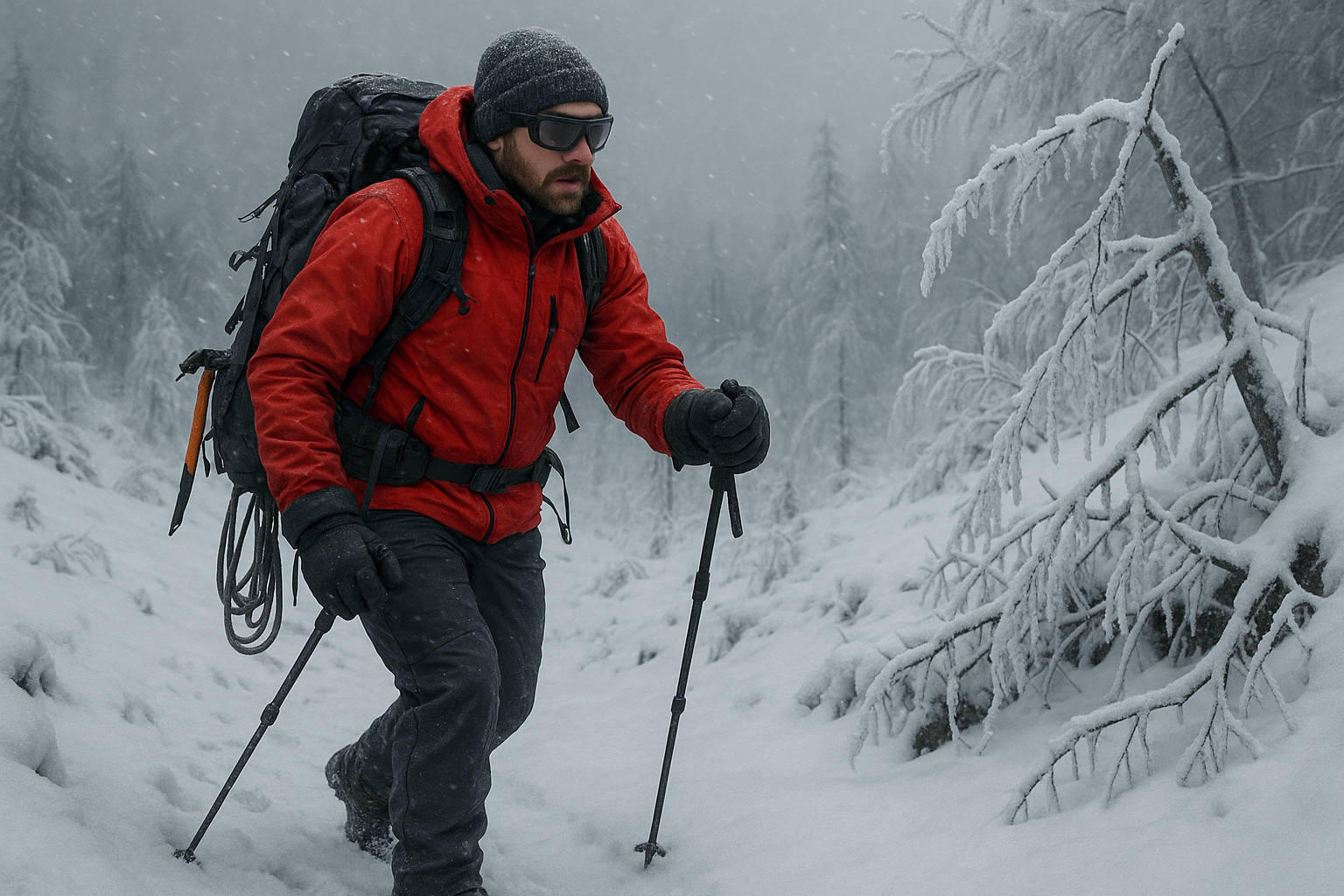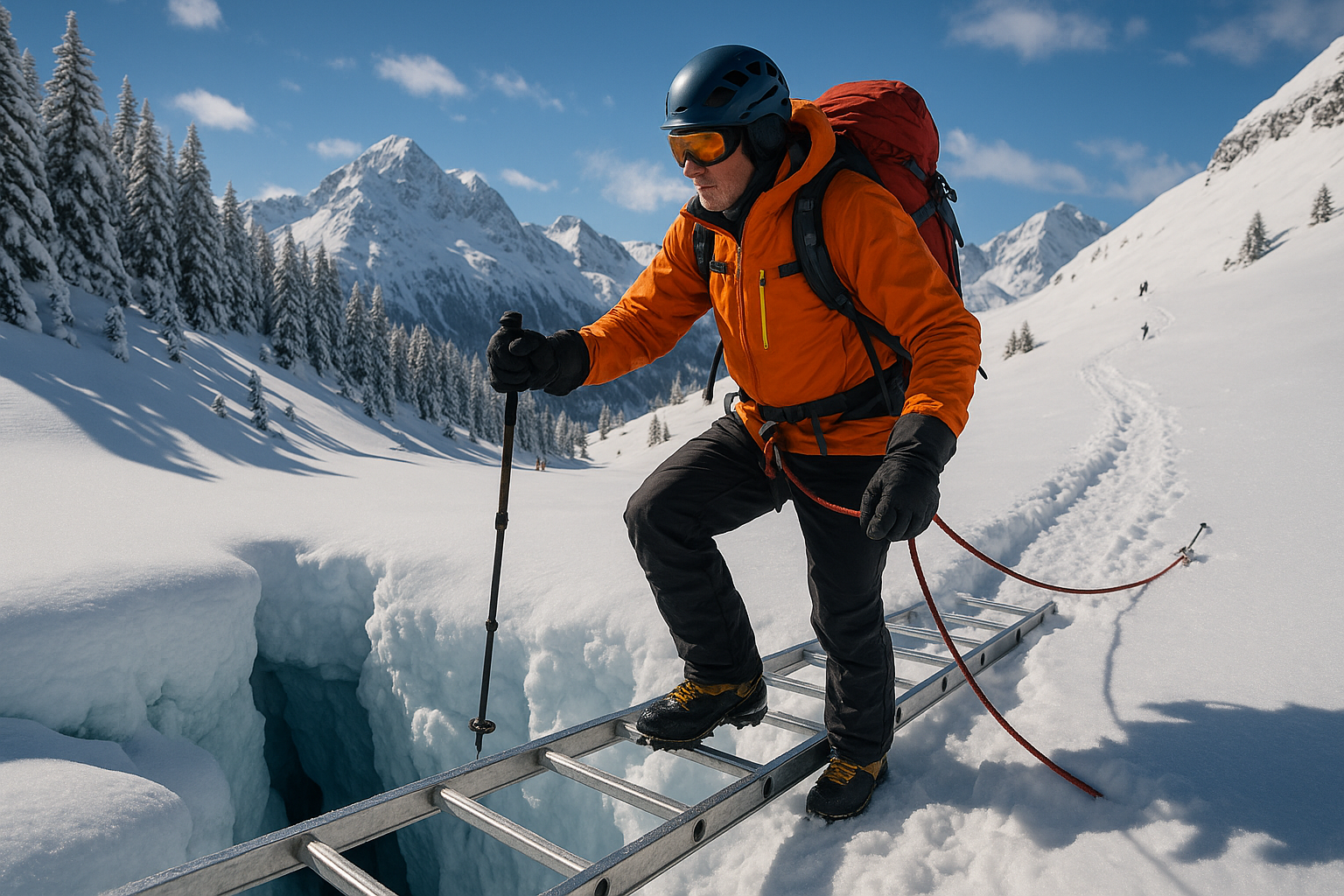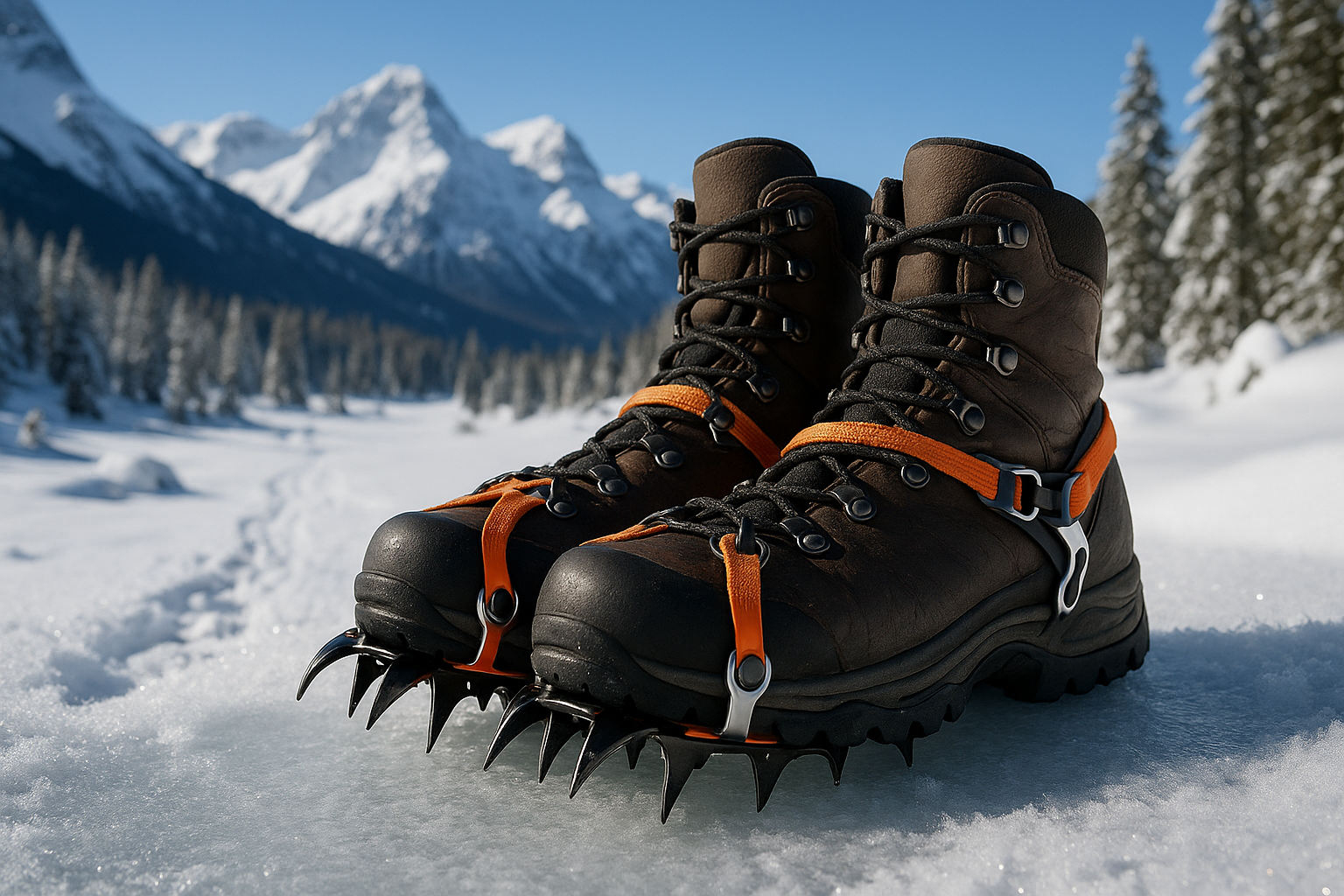Picture this: you’re deep in the heart of a winter wonderland, surrounded by the ethereal beauty of ice-laden trees, each branch glistening like crystal in the pale winter sun. The world is hushed, save for the crunch of snow beneath your boots and the distant call of a lone bird. This is the magic of winter backpacking, a serene escape into nature’s icy embrace. Yet, amid this beauty lies a formidable challenge: ice storms. 🌨️ These powerful forces of nature can transform your peaceful trek into a battle for survival, testing your skills, endurance, and resilience.
For those unprepared, an ice storm can swiftly turn into a perilous ordeal, fraught with slippery paths, biting winds, and the threat of hypothermia. However, with the right preparation, mindset, and knowledge, backpacking through these conditions not only becomes manageable but can also be one of the most rewarding experiences you’ll ever undertake. In this article, we will explore how to navigate these icy challenges like a seasoned pro, ensuring your winter adventures are safe, exhilarating, and unforgettable.
Understanding the nature of ice storms is crucial. These weather phenomena occur when raindrops freeze upon contact with cold surfaces, creating a slick, glass-like coating over everything. This layer of ice can range from a mere glaze to several inches thick, impacting your path and making navigation tricky. The unpredictability of ice storms requires backpackers to be adaptable and vigilant, always ready to adjust their plans based on evolving conditions.
Preparation is your best ally against the harsh realities of winter backpacking. Proper gear, from crampons to insulated layers, is essential to maintaining warmth and stability on treacherous terrains. In the sections ahead, we’ll dive into the specifics of packing for such excursions, emphasizing lightweight yet effective gear that ensures both safety and comfort. 🧣🥾
But gear is only part of the equation. Understanding how to dress in layers, recognizing signs of frostbite and hypothermia, and knowing when to push forward or turn back are skills that can make the difference between an enjoyable hike and a dangerous expedition. We will provide detailed insights into these critical skills, offering tips from seasoned backpackers who have weathered many a storm.
Navigation takes on a whole new meaning in ice-laden landscapes. Traditional trails may be obscured, and GPS devices can falter in extreme cold. Here, we’ll discuss alternative navigation techniques, such as using topographic maps and compasses, and the importance of having a well-thought-out route plan that includes potential escape routes and emergency shelters.
Moreover, surviving an ice storm isn’t just about the physical challenges; it’s a mental game too. Staying calm and focused when the wind howls and visibility drops is paramount. We’ll explore mental strategies to maintain a positive outlook, manage stress, and make sound decisions under pressure. After all, your mindset can be as critical as your physical preparedness.
Food and hydration are often underestimated aspects of winter backpacking. The cold can diminish your sense of thirst, yet staying hydrated is vital. We’ll discuss efficient ways to melt snow for water, high-calorie foods that provide sustained energy, and the best practices for cooking in freezing conditions.
Finally, no backpacking adventure is complete without a sense of connection to the environment. Ice storms, for all their danger, offer a unique glimpse into the raw power and beauty of nature. We’ll reflect on the awe-inspiring scenes that await the intrepid explorer, from frosted landscapes to the quiet solitude that only winter can offer. These moments of reflection and appreciation not only enrich your journey but also deepen your respect for the natural world.
As we embark on this exploration of winter backpacking through ice storms, our goal is to equip you with the knowledge, skills, and confidence needed to tackle these adventures head-on. Whether you’re a seasoned backpacker looking to expand your winter repertoire or a novice eager to embrace the chill, this guide is your companion for thriving in the ice, ensuring every step is both safe and spectacular. ❄️🏔️

Conclusion
As we conclude our exploration of ice storm backpacking, it’s clear that mastering this extreme form of wilderness travel requires preparation, adaptability, and respect for nature’s raw power. Navigating frozen terrain demands not only physical endurance but also strategic planning — from selecting insulated gear and traction equipment to understanding weather shifts and ice safety.
The true mastery of ice storm backpacking lies in balance — between courage and caution, resilience and mindfulness. 🌨️💡 By embracing the elements while staying grounded in technique and awareness, adventurers can transform harsh conditions into moments of clarity and triumph. Ultimately, mastering ice storm backpacking is more than surviving the cold — it’s about cultivating strength, adaptability, and the unshakable spirit of exploration.
Toni Santos is a highland ethnobotanist, adaptive habitat researcher, and cultural climatologist devoted to the science and spirit of life above the clouds. Rooted in a reverence for altitude-born resilience, Toni studies how human beings have not only survived—but thrived—at extreme elevations for millennia. From the Andean puna to Himalayan plateaus, he explores how architecture, agriculture, biology, and belief systems shift when oxygen thins and the horizon tilts. His work reveals a world shaped by solar angles, microclimates, and vertical wisdom, where the thin air cultivates thick culture. Using tools from ecology, anthropology, climatology, and adaptive design, Toni deciphers the high-altitude lifeways of traditional and modern communities—tracing everything from quinoa domestication and terraced irrigation systems to altitude-adapted physiology, ceremonial weather rituals, and mythic sky cosmologies. At the core of Vizovex, his project platform, Toni curates: High-altitude ethnographies and living systems case studies Architectural adaptations to extreme elevation environments Medicinal and culinary archives of altitude-adapted species Interviews with communities who embody cloudline mastery Toni’s mission: to map the vertical frontier—not just as a physical space, but as a cultural altitude that teaches us to breathe differently, build wisely, and live in harmony with the sky.




